
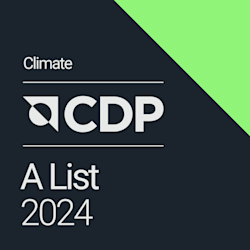
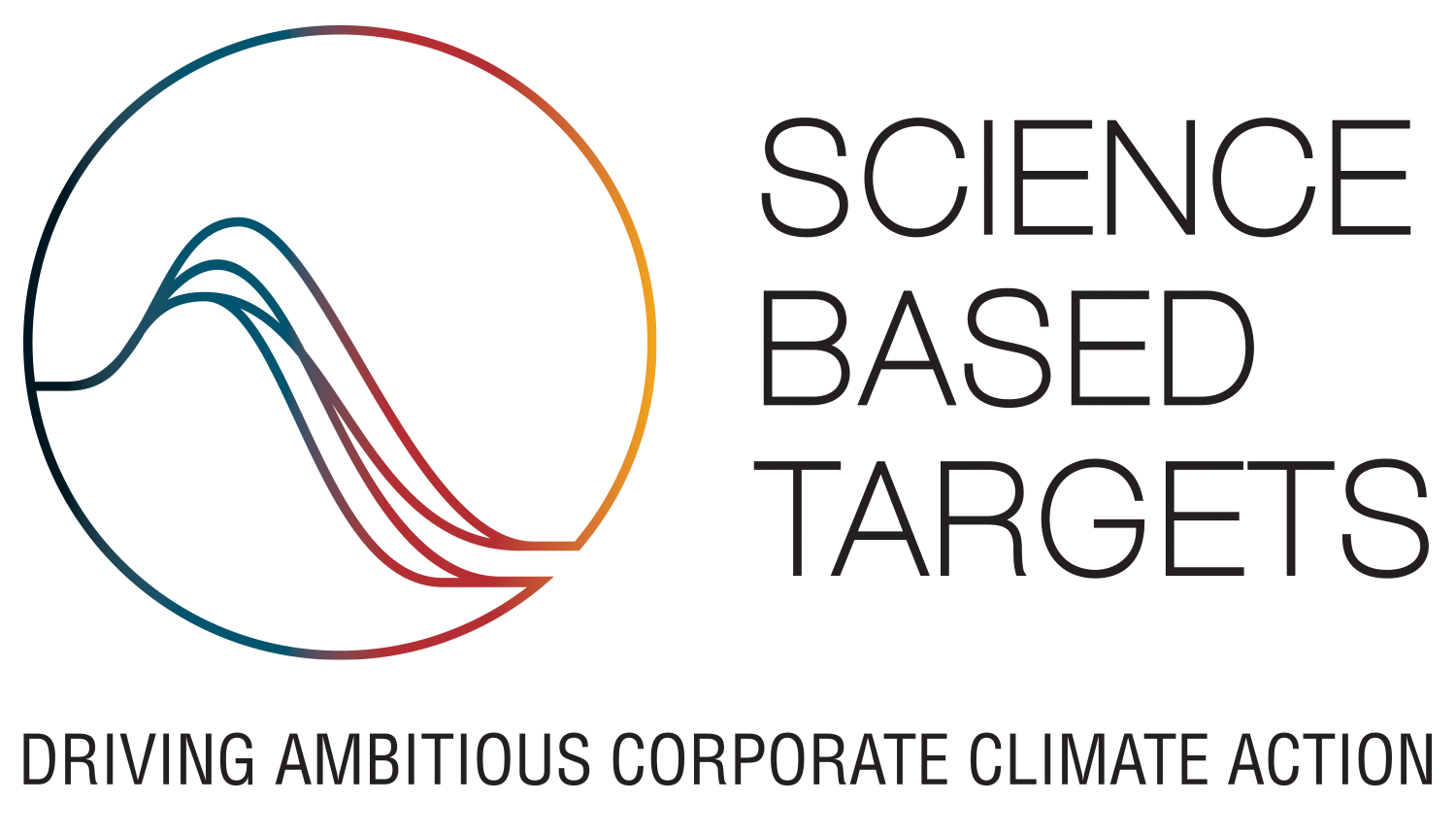
Matsuda Sangyo Co., Ltd. has established as our corporate philosophy “making effective use of the limited Earth resources and contributing to society through business.” To that end, we strive to develop and nurture the products and services that customers require by enhancing our customer relationships across all our business activities, included the recovery of precious metals from industrial resources, manufacturing and sale of precious metal products, proper treatment of industrial waste, and precision cleaning of semiconductor manufacturing equipment.
With the desire to realize our vision, “For human happiness and a beautiful Earth,” we recognize that conserving the environment of the Earth, our homeland, is one of the most important issues confronting all humankind. Based on this recognition, we shall engage in activities with consideration for its maintenance throughout all aspects of our business activities.
Based on the Basic Philosophy, Matsuda Sangyo Co., Ltd. has established the following items as our Quality and Environmental Policy. We shall make it our framework for setting quality and environmental objectives and strive to achieve them with the participation of all employees.
- Customer Satisfaction First and Securing the Trust of Society
We shall grasp customer requirements quickly and accurately and to provide satisfactory quality across all the aspects of delivery timeline, price, and service, as well as to provide accurate information about our products and services. All employees shall recognize this and act accordingly.
- Compliance Focus
We shall clarify the laws and the regulations that are applicable to our business activities, products, and services as well as their environmental aspects, alongside other requirements that are required by our customers and other stakeholders. All employees shall recognize these and ensure thorough compliance.
- Striking a Balance between Reducing Environmental Burden and Business Growth
We shall strive to reduce our environmental burden, including the prevention of pollution, by conducting environmental due diligence related to our business activities, products and services, establishing management standards to mitigate identified risks, and implementing these standards with the active participation of all employees.
Furthermore, we shall address important environmental issues surrounding our company, such as global warming countermeasures, establishing a circular society, and conserving biodiversity, and we shall strive to enhance our corporate value toward the realization of a sustainable society.
- Proper Management of Hazardous Chemical Substances
We shall properly manage the procurement, use, and contamination prevention of chemical substances regulated by laws and regulations, and by our customers and other stakeholders.
In using chemical substances that have an impact on the human body and the environment, we shall accurately grasp the risks, define management standards on their handling, storage, movement, and disposal, and manage them properly.
- Accomplishment of the Plan-Do-Check-Act (PDCA) Cycle
We shall strive to enhance our quality and environmental performance by establishing and operating an integrated quality and environment management system, and to improve this integrated management system continually by checking the outcomes through periodic management reviews.
This Quality and Environmental Policy shall be reviewed in consideration with its outcomes, changes to the situation surrounding our company, and changes to the needs of our customers and other stakeholders.
This policy applies to Matsuda Sangyo Co., Ltd.’s domestic Precious Metals Business Segment.
April 1, 2025
KOJI TSUSHIMA
Executive Vice President
Matsuda Sangyo Co., Ltd.
The Matsuda Sangyo Group has decided on its important environmental issues as set out below, and will strive to reduce environmental burden in its business activities going forward.
(1) Energy consumption and greenhouse gas emissions
(2) Emissions into atmosphere
(3) Hazardous substances
(4) Solid waste
(5) Pollution prevention and resource reduction
(6) Water management
(7) Biodiversity
Matsuda Sangyo supplies the following products manufactured using 100% recycled gold as raw material:
- Potassium Gold Cyanide (Product name: ECO PGC 683)
- Sodium Gold Sulfite (Product name: ECO Auro Assist 100)
- Granular Gold (Product name: ECO EMG GOLD 100)
In addition, we obtained certification from UL Japan*, an independent third-party organization, ahead of other domestic manufacturers. Going forward, we will continue to expand the product lineup of the “ECO Series,” manufactured using 100% recycled precious metals with low carbon dioxide emissions, thereby promoting resource circulation and contributing to our customers’ sustainability initiatives through the reduction of environmental impact.
* Certification from UL Japan confirms, based on the standards established by UL LLC in the United States, that the products of the “ECO Series” are manufactured using 100% recycled gold.
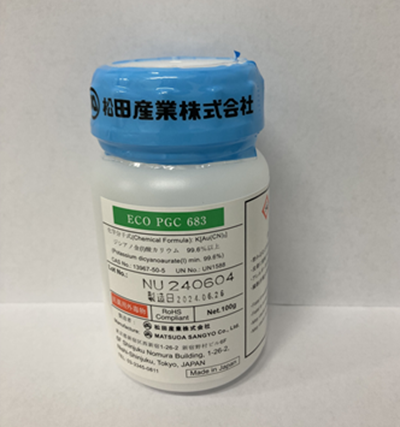
Potassium Gold Cyanide
(Product name: ECO PGC 683)
Sodium Gold Sulfite
(Product name: ECO Auro Assist 100)
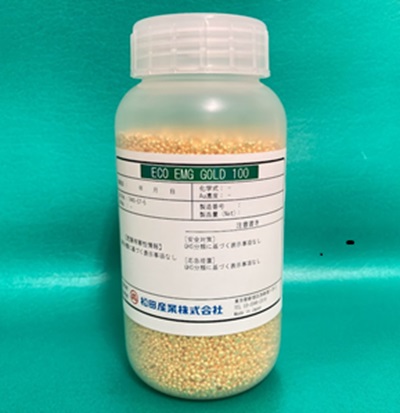
Granular Gold
(Product name: ECO EMG GOLD 100)
Abnormal weather conditions are now intensifying around the world as a result of climate change, and these are having a severe impact on nature and human society. Scientific studies led by the Intergovernmental Panel on Climate Change (IPCC) have pointed out the strong possibility that it may no longer be possible to halt global warming if the average temperature rise of the world is not suppressed to 1.5℃ below pre-industrial levels (around 1850).
The Matsuda Sangyo Group perceives climate change response, which leads to the realization of a sustainable society, as the mission of our company. In December 2023, we acquired certification for the SBT 1.5℃ target*1, and we have set decarbonization targets for 2030 and 2050, which we are working on toward the realization of carbon neutrality.
In addition, in line with the TCFD*2 recommendations, we are first working to quantify the financial impacts in order to reflect the risks and opportunities of climate change in our business activities.
Furthermore, we continue to proactively disclose information to CDP*3, and in 2024 we received the highest rating of “A” in both the CDP Climate Change Program and the CDP SEA (Supplier Engagement Assessment).
*1 Science-based GHG emissions reduction target
*2 Task Force on Climate-Related Financial Disclosures, established by the Financial Stability Board to promote information disclosure of climate-related risks and opportunities
*3 A non-governmental organization (NGO) managed by a British charity that evaluates the initiatives and information disclosure by companies and local governments in the environmental field in three areas: climate change, water resources, and forest protection.
The Matsuda Sangyo Group discloses important climate-related information (governance, strategy, risk management, indicators, and targets) based on the TCFD recommendations.
With a view to striking a balance between the realization of a sustainable environment, society, and economy, and enhancing the corporate value of the Matsuda Sangyo Group, we have established a Sustainability Committee under the direct supervision of the Board of Directors, for the purpose of facilitating the promotion of decisions and initiatives on important matters related to promoting sustainability management, including climate-related matters. The Sustainability Committee is composed of the Directors (including Outside Directors) and members nominated by the Board of Directors from among the Executive Officers. The President and Representative Director chairs the Committee. The roles of the Sustainability Committee are as follows: (1) formulation of overall policy; (2) deciding on important matters that should be addressed; (3) evaluation of risks and opportunities; (4) setting of targets; (5) formulation of action plans; and, (6) verification and monitoring of actions. It convenes regular meetings four times a year in principle, and the details of meetings are reported to the Board of Directors and the Audit and Supervisory Committee. The Board of Directors checks and supervises the important matters decided upon by the Sustainability Committee, including processes, while keeping in mind the need to strike a balance between social trends, particularly recommendations by international initiatives as well as domestic and overseas policies, with the business growth of the Matsuda Sangyo Group.
Note: Please refer to the Corporate Governance Structure (p.66) for details on the governance system.
The Matsuda Sangyo Group has established “striking a balance between reducing environmental burden and business growth” as an important policy in the Medium-term Management Plan (FY2022–2025) announced in May 2022. We consider scenario analysis necessary for achieving this target, and we are reviewing the risks and opportunities brought about by climate change.
In climate scenario analysis, we set out two hypothetical scenarios: the 1.5°C scenario with increased risks for transitioning to a low-carbon/decarbonized society, and the 4°C scenario with increased physical risks accompanying climate change without achieving low-carbon/decarbonization goals. Based on these, we select the key drivers for our corporate Group and extract, evaluate, and identify the risks and opportunities.
With regard to the results of this analysis, the validity of the evaluation is checked and shared within the Sustainability Committee.
(Reference information for the scenarios)
- International Energy Agency (IEA), “World Energy Outlook”
- Intergovernmental Panel on Climate Change (IPCC), “Special Report on Global Warming of 1.5°C,” “Special Report on Climate Change and Land”
- Ministry of the Environment, “Report on the Market Size and Employment of the Environmental Industry”
- World Resources Institute (WRI), “Aqueduct Water Risk Atlas 3.0,” 2019
The Matsuda Sangyo Group has established the Total Risk Management (TRM) Committee, under the direct supervision of the Board of Directors, to identify the actualization of risks that have a serious impact on our business and corporate management and to manage them as company-wide risks.
The TRM Committee evaluates potential risks, carries out centralized management of company-wide risks, promotes response, and monitors the management status, among other activities, then reports the results of the activities to the Board of Directors and Audit and Supervisory Committee.
The standard for risk evaluation is based on references such as the relevant laws and regulations and international standards, while climate change-related risks are based on references such as the IEA’s “World Energy Outlook” and IPCC’s “Special Report on Global Warming of 1.5°C.” The probability of occurrence and degree of impact of potential risks are evaluated for each business and region, and company-wide risks that should be addressed as priority are identified. Through this method, we comprehensively evaluate the business risks of the corporate Group and formulate the response policy for risks of high priority.
With regard to climate-related risks, we have drawn up two hypothetical scenarios (1.5°C scenario, 4°C scenario), based on which we select the key drivers for our corporate Group, and extract and evaluate risks and opportunities. The Sustainability Committee then verifies them and identifies the risks, and we promote responses and monitor progress in an expert subcommittee established under the TRM Committee for the purpose of managing the risks recognized as important to the business and corporate management.
The Matsuda Sangyo Group established its greenhouse gas emissions reduction targets for the whole corporate group in July 2022.
(Main measures toward reduction)
- Improve energy consumption efficiency
- Expand the adoption of renewable energy (purchase of renewable energy, in-house power generation, PPA)
- Review and improve manufacturing and treatment processes (including fuel conversion, CO2 capture)
- Introduce and update high-efficiency facilities
- Enhance the efficiency of logistics, modal shift, shift to HV for sales vehicles
- Provide products and services that can reduce environmental burden
- Cooperation through engagement with the supply chain
|
2030 (short-term) |
2050 (long-term) |
|
|
Scope1+2 |
Compared to 2020 42% reduction |
Carbon Realization of neutrality |
|
Scope3 |
Compared to 2020 25% reduction |
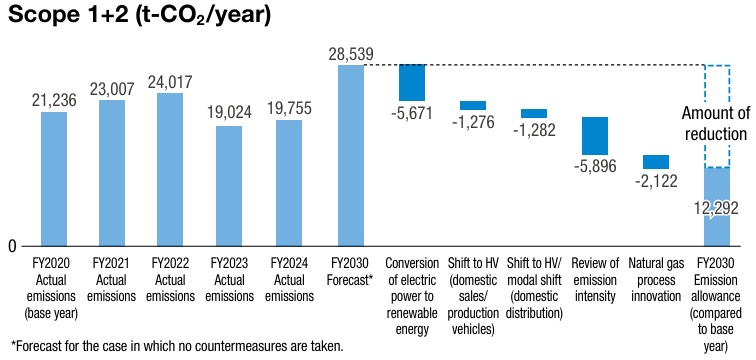
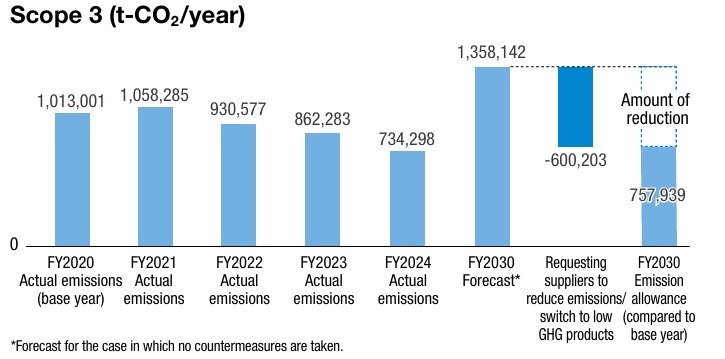
|
Scenario |
Classification |
Key driver |
Prerequisite |
Implication on the Matsuda Sangyo Group |
Impact (medium- to long-term) |
|
|
1.5 ℃ |
Policy/legal regulations |
Carbon pricing (carbon tax, emissions trading system, etc.) |
・Rise in carbon prices in countries and regions |
ーFood Business Segmentー ・Increased procurement costs |
Risk |
High |
|
Strengthening of CO2 emissions regulations (strengthening of regulations under the Act on Rationalizing Energy Use and Shifting to Non-fossil Energy, etc.) |
・Promotion of energy transition to electricity ・Demand for rationalization of energy consumption |
ーAcross all businessesー ・Increased capital investment ・Increased technological development costs |
Risk |
High |
||
|
Strengthening of regulations on agricultural land development; strengthening of emissions regulations on the FLAG (forestry, land, and agriculture) sector |
・Restrictions on new development of primary industrial areas to suppress the emission of greenhouse gases through land use and conversion ・Optimal distribution of forestry and agricultural products through international trade, and improvements in production efficiency across the world ・Export restrictions and embargoes on food products |
ーFood Business Segmentー ・Increased procurement costs |
Risk |
High |
||
|
Policy/legal regulations, technology, markets |
・Strengthening of policies toward the realization of a circular economy ・Popularization and advancement of low-carbon technologies (recycling technologies) ・Increase in demand for recycled metals accompanying rising demand for decarbonization technologies |
・Expansion of target waste recycling utilization rate based on the 4th Fundamental Plan for Establishing a Sound MaterialCycle Society (Government of Japan) ・Technological development toward improving waste recycling utilization rate, and progress in investment ・Formation of a closed loop of “reuse, recycling, and sharing” through the strengthening of policies toward the realization of a circular economy, particularly in Europe |
ーPrecious Metals Business Segmentー ・Increased profits due to increase in sales associated with growing demand for resource recycling |
Opportunity |
High |
|
|
Technology |
Popularization and advancement of low-carbon technologies (renewable energy) |
・Expansion of the corporate PPA (Power Purchase Agreement) market driven by the increasing adoption of renewable energy ・Increased options for renewable energy-sourced electricity offered by electric power retailers ・Reduction in renewable energy generation costs ・Growing renewable energy procurement needs among corporations due to technological advancement and the shift toward a decarbonized society ・Strengthening of policies by national and local governments to promote the adoption of renewable energy |
ーPrecious Metals Business Segmentー ・Reduced procurement costs |
Opportunity |
Medium |
|
|
Popularization and advancement of low-carbon technologies (Transportation) |
・Global increase in recycling demand and demand for automotive lithium-ion batteries, against the backdrop of the transition to a decarbonized society and the growing popularization of electric vehicles (EVs) such as BEVs*1 and PHEVs*2 ・Decrease in platinum usage per FCV*3 due to technological advances, alongside overall platinum demand growth driven by increasing vehicle numbers |
ーPrecious Metals Business Segmentー ・Increased profits due to increase in lithium-ion battery recycling sales ・Increased profits due to increase in BEV/PHEV/FCV-related sales in the Precious Metals Business Segment |
Opportunity |
High |
||
|
・Shrinking market for internal combustion engine vehicles (ICVs*4, HVs*3, PHEVs) due to the growing popularization of EVs and FCVs ・Strengthening of exhaust gas regulations and promotion of decarbonization policies |
ーPrecious Metals Business Segmentー ・Decline in sale of catalysts for exhaust gas purification devices |
Risk |
Medium |
|||
|
Markets |
Spread of environmentally conscious lifestyles |
・Global expansion of demand for plant-derived protein due to greater environmental awareness and health consciousness ・Popularization of sustainability-focused consumption behavior ・Popularization and promotion of plant-based food products by governments and corporations |
ーFood Business Segmentー ・Increased profits due to increase in sale of plant-based proteins |
Opportunity |
Medium |
|
|
4 ℃ |
Physical changes (acute) |
Frequent occurrences of abnormal weather conditions such as flooding |
・Increasing frequency and scale of river flooding due to advancing climate change ・Increasing flood risks in Japan and abroad |
ーAcross all businessesー ・Losses to buildings, depreciable assets, and inventory assets due to flooding ・Profit losses due to business suspension |
Risk |
High |
|
Physical changes (chronic) |
Rise in sea levels |
・Rise in sea levels and increased storm surge risks due to advancing climate change ・Increased flood risk and damage from storm surges in coastal areas both in Japan and abroad |
ーAcross all businessesー ・Losses to buildings, depreciable assets, and inventory assets due to storm surges ・Profit losses due to business suspension |
Risk |
High |
|
|
Rise in average temperature’ changes in rainfall patterns |
・Rise in average temperature and changes in rainfall patterns due to advancing climate change ・Decline in productivity for livestock products |
ーAcross all businessesー ・Increased procurement costs for eggs and chicken meat |
Risk |
High |
||


